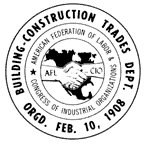H.F. van der Molen
Arbouw Foundation, P.O. Box 8114, 1005 AC Amsterdam, the Netherlands
+31 20-5805580 / vdmolen@arbouw.nl
ABSTRACT
In order to facilitate the application of health and safety information regarding construction tasks in the Dutch construction industry in daily working practice, a state-of-the-art database has been developed on the basis of knowledge gained over the past decade. Exposure to physical workload, toxic substances, noise and vibration has been evaluated and safety hazards have been listed in a uniform way. For every task relevant measures have been itemized.
INTRODUCTION
The Dutch construction industry has a relatively high rate of physical
workload, time pressure, exposure to toxic substances, noise, vibrations
and safety [2]. The same aggravating working conditions for construction
workers apply to other countries [1]. But innovation in the construction
industry is on the way. Awareness of the need to change working conditions
and to make this sector of industry more attractive to new workers has
been increasing over the past few years. In order to facilitate the application
of health and safety information regarding construction tasks in the Dutch
construction industry in daily working practice, a state-of-the-art database
has been developed on the basis of knowledge gained over the past decade.
METHODS
When a job description is drawn up for inclusion in the database the following
research steps are run through:
- analysis of the task by collecting literature and construction documentation.
- validation of the concept tasks by practical experts.
- determination of the risk factors (aggravating factors and risks).
- estimation of the exposure to stressful factors and risks.
- evaluation of
the exposure to physical workload [3], toxic substances, noise and vibration.
This evaluation is divided into three areas:
green: basic (non-increased) health risk
yellow: increased health risk; action may be planned in stages; immediate action preferred
red: strong increased health risk; immediate action is necessary. - selection of technical, organizational and individual measures.
- description of relevant standards and literature.
- drawing up of two checklists: one for the design/work preparation and one for the worksite manager.
RESULTS
At the present time 300 construction tasks are valid for inclusion in
the database. The aim is to cover the whole Dutch construction industry,
which will include more than 400 relevant tasks. By way of illustration
for bricklaying quantitative information on the occurrence of risk factors
will be presented. The risk factors for bricklaying include noise, climate,
vibration, safety, toxic substances, physical workload, repetitive strain,
static workload, lifting, carrying, pushing and pulling.
REFERENCES
- Koningsveld, E.A.P., and Molen, H.F. Van der. History and future of ergonomics in building and construction. Ergonomics, vol 40, no 10, 1997, 1025-1034.
- Molen, H.F. Van der, and Spee, T. Stimulating solutions for hazardous activities in the construction industry. As part of IEA 1997; in: Abstracts from the 1th International Symposium on Ergonomics in Building and Construction (Eds. Koningsveld E.A.P., Molen, H.F. Van der, Schneider, S.). June 30 - July 2 1997, 121-122.
- Molen, H.F. Van der, and Delleman, N.J. Arbouw guidelines on physical workload for the construction industry. As part of IEA 1997; in: Abstracts from the 1st International Symposium on Ergonomics in Building and Construction (Eds. Koningsveld, E.A.P., Molen, H.F. Van der, Schneider, S.). June 30 - July 2 1997, 95-97.
This paper appears in the eLCOSH website with the permission of the author and/or copyright holder and may not be reproduced without their consent. eLCOSH is an information clearinghouse. eLCOSH and its sponsors are not responsible for the accuracy of information provided on this web site, nor for its use or misuse.

